eclectic witchcraft, tarot, and a very mixed bag of deity worship || my pronouns are both she/her, he/him, and they/them
Don't wanna be here? Send us removal request.
Text
I think to the best of our abilities we should try to keep our witchcraft sustainable and ethical.
207 notes
·
View notes
Text
Witches will be like "my spell candle did something weird!!! Is this a sign????" And they'll show you the before and after pics for reference and.
By god in the first picture, the candle is loaded with plastic glitter and too many herbs all around the wick and a thick sheen of vegetable oil and essential oils. And the second picture is a shattered glass plate and wax absolutely everywhere and scorch marks on the table and.
Babes that isn't "weird" and the only "sign" here is that you have no concept of candle safety!!!!
2K notes
·
View notes
Text
*casting an anti-seasonal-depression spell over you* off you go
10K notes
·
View notes
Text









𝐋𝐚𝐝𝐲 𝐁𝐫𝐢𝐠𝐢𝐝
𝘨𝘰𝘥𝘥𝘦𝘴𝘴 𝘰𝘧 𝘧𝘪𝘳𝘦, 𝘱𝘰𝘦𝘵𝘳𝘺, 𝘩𝘦𝘢𝘳𝘵𝘩, 𝘤𝘳𝘦𝘢𝘵𝘪𝘷𝘪𝘵𝘺,
𝘭𝘪𝘧𝘦, 𝘴𝘱𝘳𝘪𝘯𝘨 𝘢𝘯𝘥 𝘧𝘦𝘳𝘵𝘪𝘭𝘪𝘵𝘺
1K notes
·
View notes
Text
Cleaning out the house and getting out the old :D Lighting a candle and spending some time outside, too.
imbolc is soon! how are we celebrating?
#Imbolc#next year i hope to have some crafts for myself#but theres a couple other things that take precedence#i may bake something too and bake a spell in it too
21 notes
·
View notes
Text
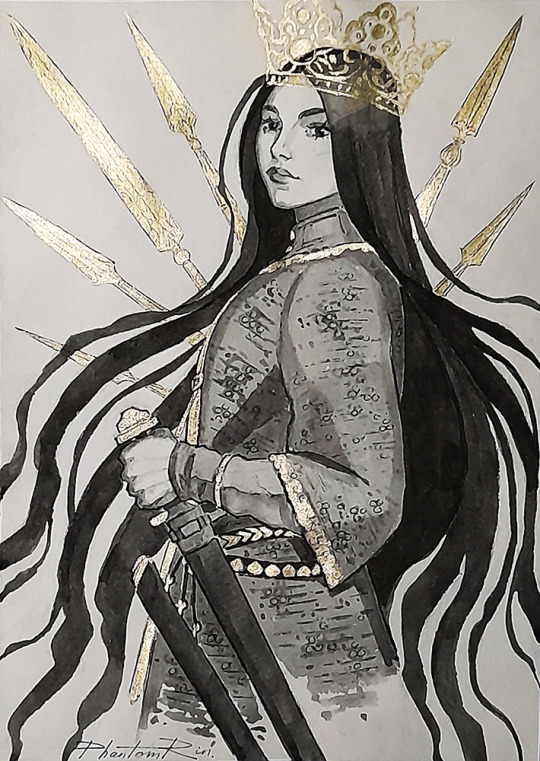
Inktober 2023
Day 21 - Marya Morevna
Ivan-tsarevich asks, "If there's a man alive, answer me! Who defeated this great army?" A man alive answers, "This great army was defeated by Marya Morevna, the fair princess."
("Marya Morevna". A.N. Afanasiev's collection of Russian folk tales.)
New stuff available to my Boosty subscribers ;) https://boosty.to/phantomrin
303 notes
·
View notes
Text
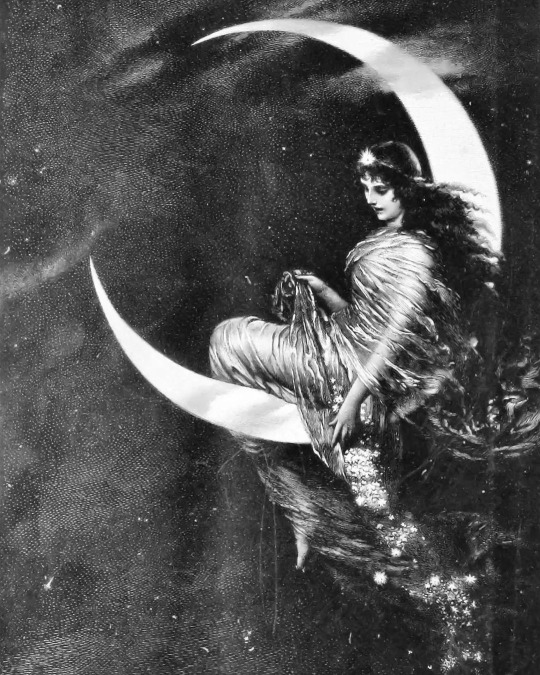
The Fairy of the Moon, circa 1891. Painted by Hermann Kaulbach.
8K notes
·
View notes
Text
Celebrating Imbolc as a solitary practitionner
You'll find that some of these ideas wander a little outside your typical Imbolc rituals, as I've included many of my own experiences alongside your more traditional practices!

Baking sweets or bread! Oatcakes, honey cakes, scones, herb bread (bonus points for use of rosemary), and lamb are among my favorite Imbolc dishes. Anything herb, oat, dairy, or honey is typical.
Cleaning your home, coupled with cleansing of the rooms and objects of your choice.
Make yourself a nice cup of tea! Lavender and chamomile tea are staples. Bonus: sweeten it using honey and milk, both traditional ingredients of the season.
Learn about the Goddess Brigid! I'm a heathen, but I've always found it rewarding and fulfilling to learn about other mythologies and deities of other pantheons! You'll find the myth of Brigid is tightly intertwined with the celebration of Imbolc, and understanding one leads to a better understanding of the other.
Decorating with white, blue, red and gold! Lambs, the moon, corn dolls, fire, brooms, sunwheels, eggs, candles, and snowdrops are imagery associated with this celebration.
Work with the moon, or with a moon deity that you worship.
Making or decorating candles, and crafting Brigid's crosses.
Enjoy a glass of milk! Feel free to flavor it using honey, blackberry syrup or leaves, chamomile, or elderflower! (Important note: elder flowers, not berries or other parts of the elder plant, which are poisnonous when uncooked.) Bonus points if you enjoy an apple alongside it! I've taken to making apple quarters to eat when night has fallen on February 1st.
Make a list of elements of your life that you would like to see "grow"! What are your current ambitions? What projects do you want to see bear fruit?
Start a knitting project, or learn how to knit! Making a cloak, referred to as Brigid's mantle, is a common way to honor the Goddess Brigid.
Visit a local body of water, especially springs! They are the perfect spot to notice the end of winter, when their ice begins to melt. It's common practice to make pebble offerings to bodies of water, in order to thank the earth for its gift of sweet water.
Make an offering to the faerie folk (for example, milk and biscuits), or start learning how to work with them.
Acquire a new house plant, or even better: sow a seed for a new plant to grow in your home!
Work with the element of fire, for example, by practicing fire-based magic, by lighting candles in the house, or by lighting a bonfire/hearth fire.
Play calm music, especially harp music!
Appreciate the quiet and calm of nighttime, for example, by leaving your home in the dark once the sun sets, and lighting it up with nothing but candles as a symbol of the returning sun.
Reading or reciting poetry! Especially poetry pertaining to the night, winter, spring, nature and the like. Feeling inspired? Why not try writing some poetry yourself!

First picture Second picture: Spring by Ruth Sanderson
174 notes
·
View notes
Text

In honor of Imbolc, here is an art study I carried out by illustrating different variations of Brighid's Cross.
901 notes
·
View notes
Text
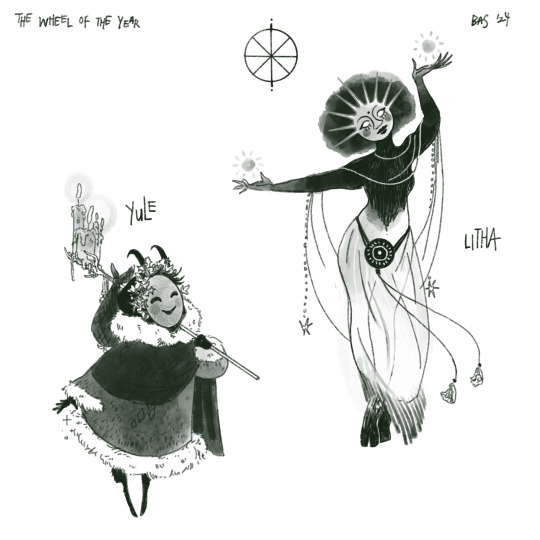



finally got around to redesigning the celestial and seasonal celebrations of the pagan year to make em more cryptid- happy belated litha folks!
695 notes
·
View notes
Text

All About Imbolc
Imbolc, also known as Imbolg, celebrated on February 1st, marks the halfway point between the winter solstice and the spring equinox in early Ireland and Scotland, and also signified the beginning of the first signs of spring after all the harsh winter days. Originally a pagan holdiay in pre-Christian times, there is little in writing about the historic traditions and customs, although many historians believe it revolved around the Celtic Goddess Brigid, lambing season, and cleansing due to observed ancient poetry.
Brigid is a Goddess and daughter of the father-God of Ireland, Dagda. She is associated with quite a few things depending on the sources, but universally associated with wisdom and poetry. Other associations of hers are blacksmithing, protection, domesticated animals, childbirth, fire, and healing. She was also known as a protector of the home and the family.
Once Christianity arose, it is believed that the Goddess was syncretized with the Irish Saint Brigid by Christian monks due to the many overlapping associations. This caused Imbolc to quickly turn into St. Brigids Day and the next day into Candlemas with the rising Christian popularity, enmeshing the holiday associations together.
Today, many people have mixed the traditions and melded many associations from both religious and cultural history to celebrate their own unique way. Common ways to celebrate are making a Brigid's Cross, welcoming Brigid into the home, having a feast in her honor, cleaning the home and oneself, visiting a holy well, and in some parts of the world they still hold festivals and processions carrying a representation of Brigid. Many pagans nowadays are using associations of hers and their connection with nature to create their own ways to celebrate, however, and you can absolutely celebrate however you feel called to do so.
Imbolc Associations:
Colors - white, gold or yellow, green, and blue
Food - milk, butter, cheese, seeds and grains, breads, herbs, blackberries, oat porridge, wild onion and garlic, honey
Animals - sheep and lambs, swans, cows, burrowing and hibernating animals
Items - candles, corn dolls, Brigid's cross, fires, snowdrops and white flowers, crocuses and daffodils, flower crowns
Crystals - amethyst, garnet, ruby, quartz, bloodstone
Other - lactation, birth, feasting, farm preparation, cleansing and cleaning, the sun, poetry and creative endevours, smithing, water
Ways To Celebrate Imbolc:
make a Brigid's cross
light candles
have a feast
bake bread
plan your spring garden
leave an offering for Brigid
make a corn doll
craft a flower crown
clean your home
take a cleansing bath
make something out of metal
have a bonfire
look for the first signs of spring
make your own butter or cheese
do divination work and seek wisdom
write a poem
576 notes
·
View notes
Text
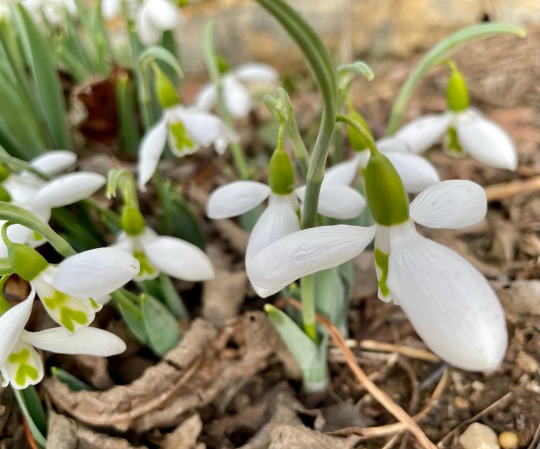

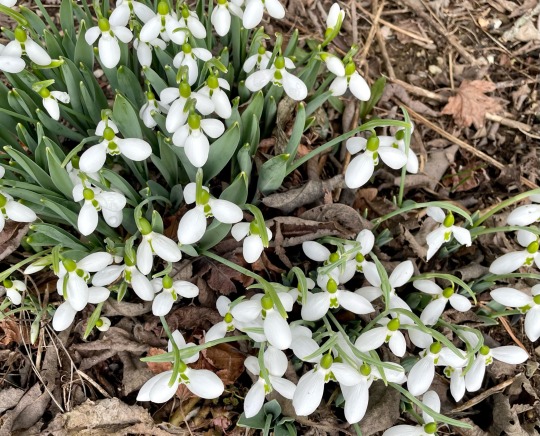
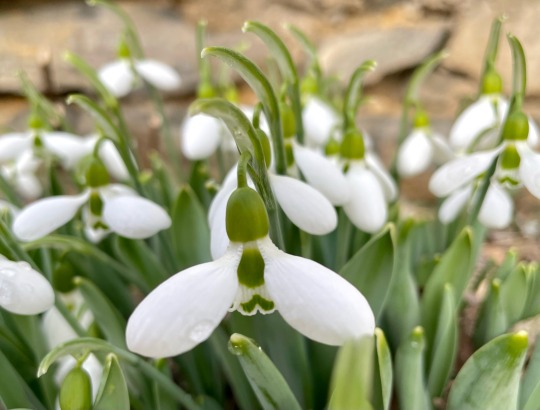
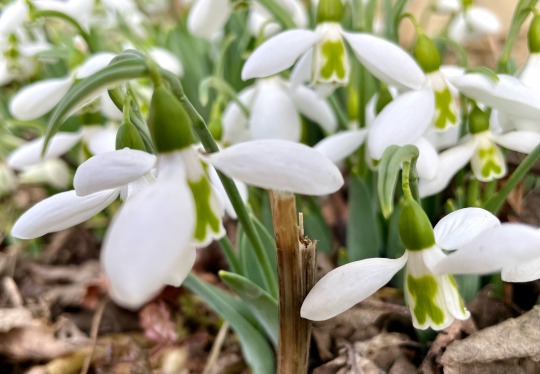
Snowdrops in the garden and Imbolc/St Brigid’s Day is almost here!
741 notes
·
View notes
Text
𝐈𝐦𝐛𝐨𝐥𝐜
⠂⠄⠄⠂⠁⠁⠂⠄⠄⠂⠁⠁⠂⠄⠄⠂⠄⠄⠂⠂⠄⠄⠂⠁⠁⠂⠄⠄⠂⠁⠁


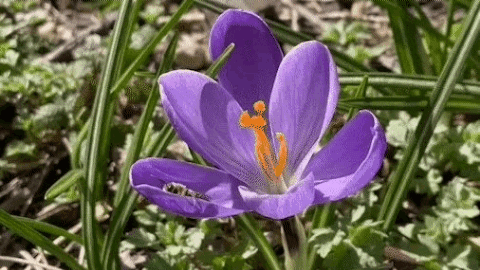

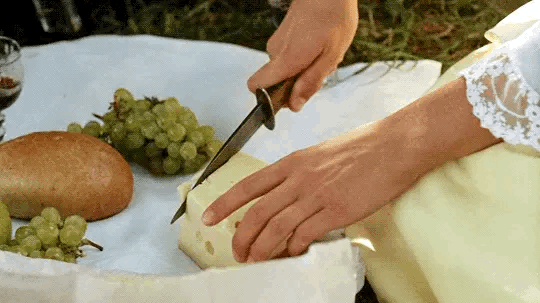

⠂⠄⠄⠂⠁⠁⠂⠄⠄⠂⠁⠁⠂⠄⠄⠂⠄⠄⠂⠂⠄⠄⠂⠁⠁⠂⠄⠄⠂⠁⠁
What is Imbolc?
Imbolc is a festival that marks the midpoint between the Winter Solstice and the Spring Equinox, occurring around February 1-2. Known as Brigid’s Day or Candlemas, it celebrates the first stirrings of spring and the return of light. The name Imbolc translates to “in the belly,” symbolizing new life, growth, and the creative potential that is awakening within the earth. It is a time of purification and renewal, where the energy of the earth begins to rise, bringing warmth and vitality to the whole world.
Imbolc is often dedicated to Brigid, the goddess of fire, healing, poetry, and craftsmanship. Brigid is associated with both the hearth and the forge, embodying the transformative powers of fire and light. As the days grow longer and the sun strengthens, we honor her influence in bringing fertility and growth to the land. The first signs of spring, such as the lactation of ewes and the appearance of snowdrops, are seen as blessings from Brigid, signaling that life is returning.
Imbolc is also a festival of light, a time to celebrate the increasing daylight through the lighting of candles, bonfires, and lanterns. As the earth begins to thaw and the seeds of spring stir beneath the soil, Imbolc offers a space for spiritual growth and creative awakening. It is a perfect time to clear away the stagnant energies of winter, refresh the soul, and prepare for the vibrant months to come. The act of lighting candles not only honors the growing light but also serves as a reminder of the inner light within us all, waiting to shine brightly in the coming seasons.
⠂⠄⠄⠂⠁⠁⠂⠄⠄⠂⠁⠁⠂⠄⠄⠂⠄⠄⠂⠂⠄⠄⠂⠁⠁⠂⠄⠄⠂
Goddess Brigid
Brigid, one of the most revered deities in the Celtic pantheon, is also known as Lady of the Sacred Flame. She is the goddess of healing, fire, smithcraft, creativity, animals, hearth and poetry, Imbolc is her Sabbat, a time dedicated to honoring her influence on creativity and new beginnings. Her symbols are fire, poetry, lambs and fertility. Brigid is often depicted with a flame emerging from her head or a serpent coiled around her, representing the powerful energy she brings. She is also a goddess of protection, childbirth, women, blacksmithing and life.
⠂⠄⠄⠂⠁⠁⠂⠄⠄⠂⠁⠁⠂⠄⠄⠂⠄⠄⠂⠂⠄⠄⠂⠁⠁⠂⠄⠄⠂
The Return of Light and the First Signs of Spring
Imbolc marks the shift from winter to the first signs of spring. Days start to get longer, and you can feel the earth beginning to wake up, even though winter isn’t completely gone. It’s the time when the sun starts to grow stronger, and we begin to see early signs of new life. During Imbolc, many light candles or bonfires in Brigid's honor, celebrating the return of light and the growing strength of the sun as the days grow longer.
⠂⠄⠄⠂⠁⠁⠂⠄⠄⠂⠁⠁⠂⠄⠄⠂⠄⠄⠂⠂⠄⠄⠂⠁⠁⠂⠄⠄⠂
Brigid's Cross
A traditional symbol of Imbolc, Brigid’s Cross is woven from reeds or straw and represents both protection and blessings. It’s believed to offer protection from fire and lightning, making it an essential symbol of Brigid’s influence. In Ireland, it was common to hang Brigid’s Cross on the rafters of homes to invoke her protective energy.
⠂⠄⠄⠂⠁⠁⠂⠄⠄⠂⠁⠁⠂⠄⠄⠂⠄⠄⠂⠂⠄⠄⠂⠁⠁⠂⠄⠄⠂
Brigid's Flame
According to legend, Brigid lit a flame on the hill of Kildare, pledging to keep it burning in her honor. This flame was said to burn continuously, symbolizing her eternal presence and influence over the cycles of life. The fire became a sacred symbol, tended by the Brigidine Sisters for centuries, representing not just physical warmth, but the power of creativity and healing.
⠂⠄⠄⠂⠁⠁⠂⠄⠄⠂⠁⠁⠂⠄⠄⠂⠄⠄⠂⠂⠄⠄⠂⠁⠁⠂⠄⠄⠂
Magic Correspondences
Planets: Sun, Moon, Venus
Season: Midpoint between Winter and Spring
Element: Earth, Fire
Time of Day: Dawn
Tarot: The Star, The Empress, The Ace of Wands
Colors: White, Light Yellow, Green, Gold, Silver, Lilac, Pale Pink, Purple
Herbs: Chamomile, Clover, Angelica, Heather, Basil, Bay Laurel, Willow, Rosemary, Milk Thistle, Coltsfut, Lavender,
Fruits: Orange, Lemon, Pomegranate, Apple, Pear, Blackberry (Brigid's favorite fruit)
Vegetables: Leek, Potato, Carrot, Turnips, Garlic
Runes: Sowilo, Berkano, Algiz, Kenaz
Crystals: Carnelian, Amethyst, Garnet, Onyx, Ruby, Citrine, Clear Quartz, Milk Quartz
Trees: Rowan, Willow, Birch
Goddesses: Brigid, Demeter, Hestia, Vesta, Aphrodite, Ceres, Venus, Arianrhod, Cerridwen, Gaia, Aradia, Athena, Minerva
Gods: Faunus, Eros, Pan, Cupid, Aenghus Og
Dragon: Fafnir
Flowers: Snowdrops, Crocus, Daisy, Dandelion, Chicory
Animals: Lamb, Sheep, Cow, Deer, Groundhog, Hedgehog, Snake, Swan, Wolf, Bear, Boar
Magical Powers: Purification, Renewal, Creativity, Fertility, Awakening, New Beginnings, Hearth and Home, Healing, Hope, Inspiration, Cleansing, Protection
⠂⠄⠄⠂⠁⠁⠂⠄⠄⠂⠁⠁⠂⠄⠄⠂⠄⠄⠂⠂⠄⠄⠂⠁⠁⠂⠄⠄⠂
Activities To Do:
🐑 Light candles or a bonfire to honor the return of the sun.
🐑 Make an Imbolc altar.
🐑 Rest and enjoy the midwinter season doing cozy activities.
🐑 Wear the colors of the season.
🐑 Cook or bake seasonal dishes, especially fresh bread, cheese, or other dairy products.
🐑 Make Brigid's cross.
🐑 Take a walk in nature and collect branches and stones to add to your altar.
🐑 Donate to animal shelters or send wishes for the animals born during this season, especially lambs.
🐑 Eat fresh bread or drink milk
🐑 Clean your house to invite new positive energy.
🐑 CREATE ANYTHING!! whether it’s art, crafts, edits or poetry.
🐑 Write the sigil of Imbolc somewhere visible to attract its energy( I usually do this on a piece of paper that I put on my altar or on my arm)
🐑 Take a bath with lavender or cinnamon essential oil
🐑 Read about the goddess Brigid
🐑 If it’s a sunny day, celebrate the festival of light by spending time outdoors and letting the sun purify you.
🐑 Do offerings for your deities
🐑 Dance to festive music, feel the joy of the season, and let your inner fire shine :D
🐑 Try spinning or crafting with wool to honor traditional Imbolc crafts.
🐑 Look for seasonal flowers like snowdrops or crocus and bring some into your home for decoration.
🐑 Plant seeds if the weather allows, symbolizing new beginnings and growth.
🐑 Do spells for fresh starts and set intentions
🐑 Worship Goddess Brigid or any deities you feel connected to during this time.
🐑 Read poetry to celebrate the creative energy of the season.
🐑 Make an Imbolc Magick Spell Jar
⠂⠄⠄⠂⠁⠁⠂⠄⠄⠂⠁⠁⠂⠄⠄⠂⠄⠄⠂⠂⠄⠄⠂⠁⠁⠂⠄⠄⠂
Food and Drinks:
Dairy products (or vegetarian alternatives), like milk, cheese, and yogurt, freshly baked bread, muffins, waffles, blackberry jam, blackberry cakes (anything with blackberries), lemon cake, poppy seed cakes, biscuits coated in sesame seeds, dishes with bold spices, seeds such as sunflower, poppy, and sesame (for Imbolc seeds are very meaningdul), red cabbage, oats, butter, honey, garlic, scones, pancakes, crepes, pickles, cheese pie, oatcakes, bannock, mashed potatoes, colcannon, chili peppers, eggs, apple tarts, spiced nuts, roasted vegetables, hearty soups, grain-based salads, and citrus fruits, such as orange, lemon or pomelo). Don’t forget to make a wish while flipping your pancakes on Imbolc! <3
⠂⠄⠄⠂⠁⠁⠂⠄⠄⠂⠁⠁⠂⠄⠄⠂⠄⠄⠂⠂⠄⠄⠂⠁⠁⠂⠄⠄⠂
useful sources: Wicca: A Modern Guide To Witchcraft & Magick; Encyclopedia of Witchcraft: The Complete A-Z for the Entire Magical World by Judika Illes
gifs credit: Pinterest
Tip Jar🌲
951 notes
·
View notes











